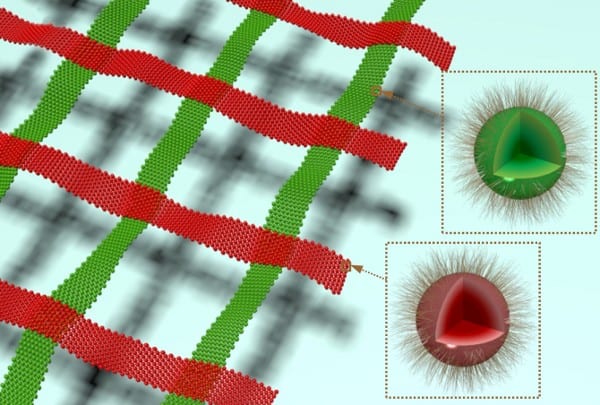Large-area fabrics have been made fr om ribbons, in turn made from CdSe quantum-dot nanoparticles. These ribbons can float on the surface of water, can have a thickness of a single nanoparticle, and have high flexibility. This high mechanical flexibility is combined with the inherent optoelectronic properties of the constituent quantum dots.
om ribbons, in turn made from CdSe quantum-dot nanoparticles. These ribbons can float on the surface of water, can have a thickness of a single nanoparticle, and have high flexibility. This high mechanical flexibility is combined with the inherent optoelectronic properties of the constituent quantum dots.
Professor Alfred Crosby and his group at the University of Massachusetts in Amherst, USA, fabricated these new ribbons, 10 cm in length, 200 nm in width, and less than 10 nm in height, by trapping a solution of the nanoparticles (in a mixed solvent of toluene and cyclohexane) under a flexible PET-film blade, controlling their evaporative self-assembly.
By using suitable functionalities, arrays of the ribbons can be crosslinked into fabric mats by way of UV irradiation. These fabrics can wrap inorganic spheres, emulsions, and air bubbles. The ability to produce such materials, in a scalable, simple process, presents a considerable advantage in novel designs and fabrication of hierarchical materials founded at the nanoscale and extending far beyond into macroscale materials.

















